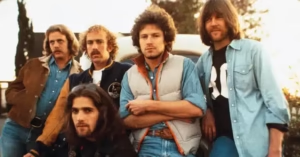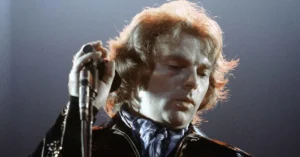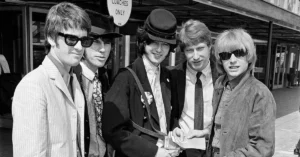Simon & Garfunkel: Poetic Voices of a Generation
Simon & Garfunkel. Origins and Formation
Paul Simon and Art Garfunkel met as schoolboys in Queens, New York, in the 1950s. They first recorded under the name Tom & Jerry, scoring a minor hit with “Hey, Schoolgirl” in 1957.
After going separate ways briefly, they reunited in the early 1960s as Simon & Garfunkel, fusing folk traditions with introspective lyrics and pristine vocal harmonies. Their work would come to define urban folk-pop and the consciousness of 1960s America.
Simon & Garfunkel. Musical Style and Significance
Simon & Garfunkel were known for:
- Delicate, intricate vocal harmonies
- Poetic, literary songwriting (largely by Paul Simon)
- Themes of alienation, love, disillusionment, and spiritual searching
- A style that blended folk, pop, baroque, and subtle psychedelia
They were instrumental in bringing folk music to mainstream audiences, bridging the gap between Bob Dylan‘s introspective lyricism and The Beatles‘ melodic innovation.
Simon & Garfunkel. Breakthrough and Classic Albums
✦ Wednesday Morning, 3 A.M. (1964)
Their debut album initially failed commercially. However, it featured the original acoustic version of “The Sound of Silence.”
After the song was remixed with electric instruments (without their knowledge), it became a #1 hit in 1965, launching their career.
✦ Sounds of Silence (1966)
Capitalizing on their unexpected success, this album expanded their themes:
- “I Am a Rock” – An anthem of emotional isolation
- “Richard Cory” – A bleak commentary on class and suicide
- “April Come She Will” – A delicate ballad showcasing Garfunkel’s vocals
✦ Parsley, Sage, Rosemary and Thyme (1966)
A lush and ambitious album featuring:
- “Scarborough Fair/Canticle” – A haunting modern reimagining of a traditional ballad
- “Homeward Bound”
- “The Dangling Conversation” – A meditation on emotional distance
✦ Bookends (1968)
A concept album about aging, memory, and societal change. Critically acclaimed and culturally resonant.
Highlights:
- “America” – A beautifully cinematic journey through a crumbling ideal
- “Mrs. Robinson” – Originally from The Graduate soundtrack; a biting critique of postwar suburbia
- “A Hazy Shade of Winter” – Later covered by The Bangles
- “Old Friends/Bookends Theme” – A melancholy reflection on time and mortality
✦ Bridge Over Troubled Water (1970)
Their final studio album was also their most commercially successful and emotionally powerful.
Key Tracks:
- “Bridge Over Troubled Water” – Sung by Garfunkel; considered one of the greatest ballads in pop history
- “The Boxer” – A personal epic of struggle and perseverance
- “Cecilia” – A playful rhythmic departure
- “El Condor Pasa (If I Could)” – A folk-pop fusion with Andean roots
This album won multiple Grammy Awards, including Album of the Year and Song of the Year.
Simon & Garfunkel. Breakup and Solo Careers
After Bridge Over Troubled Water, tensions between Simon and Garfunkel led to their split in 1970.
- Paul Simon launched a celebrated solo career, with albums like Graceland, Still Crazy After All These Years, and There Goes Rhymin’ Simon
- Art Garfunkel pursued music and acting, with a few solo hits and roles in films such as Carnal Knowledge
Despite the breakup, they reunited occasionally:
- The Concert in Central Park (1981) drew over 500,000 people
- Reunion tours in the 1990s and 2000s
- Sporadic appearances until the early 2010s, after which relations cooled again
Simon & Garfunkel. Legacy and Influence
Simon & Garfunkel left a lasting imprint on:
- Folk-rock and introspective pop music
- Singer-songwriter traditions
- Artists like James Taylor, Nick Drake, Fleet Foxes, Iron & Wine, and Sufjan Stevens
They sold over 100 million records, won Grammy Awards, and were inducted into the Rock and Roll Hall of Fame in 1990.
Their music continues to resonate with themes of melancholy, yearning, and the search for meaning, offering beauty and comfort across generations.
Interesting Facts
- “The Sound of Silence” became iconic after its use in The Graduate (1967), which greatly expanded their audience.
- Paul Simon wrote nearly all their material, though Garfunkel’s vocals were equally central to their appeal.
- They recorded in Columbia’s famed Studio A, where Bob Dylan also recorded.
- Garfunkel holds a master’s degree in mathematics from Columbia University.
- Their harmonic style was inspired by the Everly Brothers and doo-wop groups.





